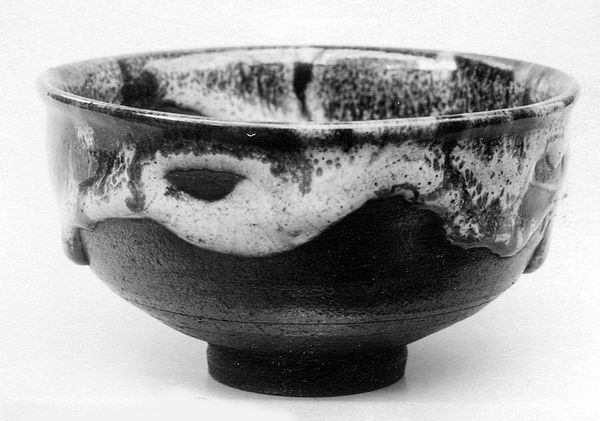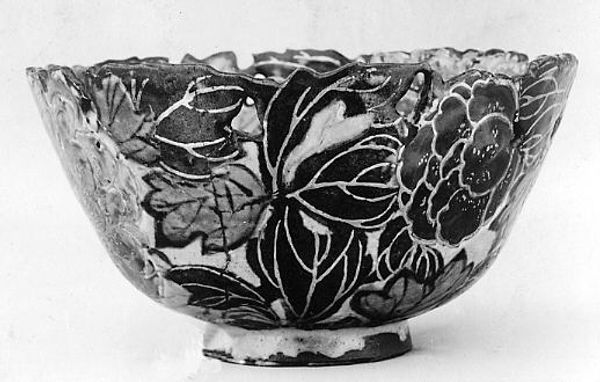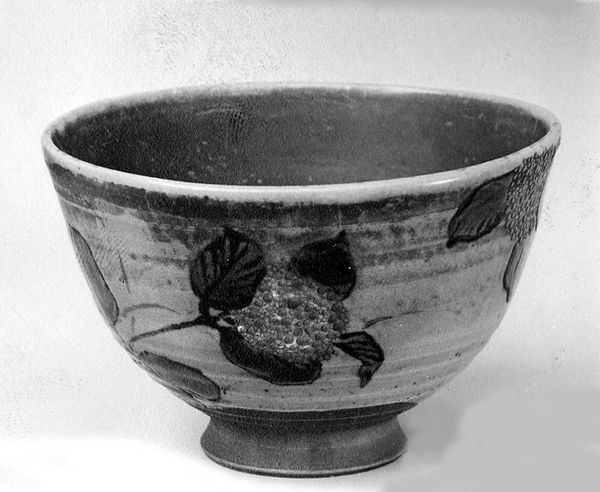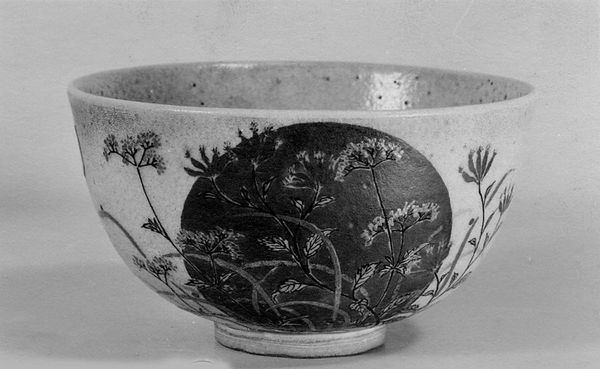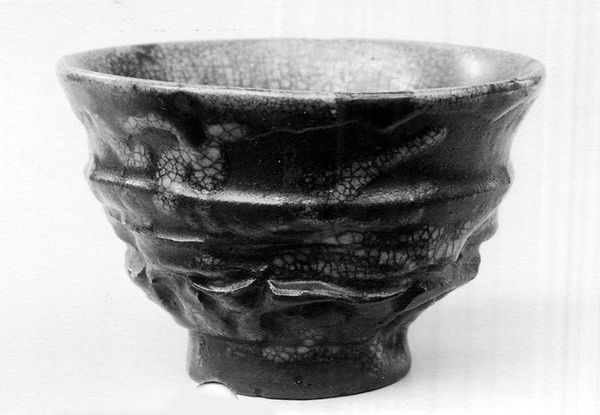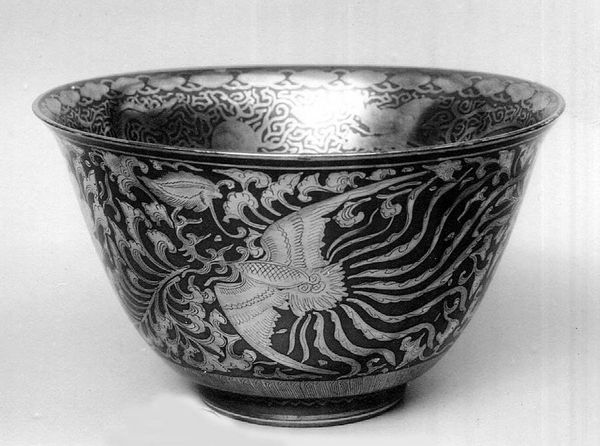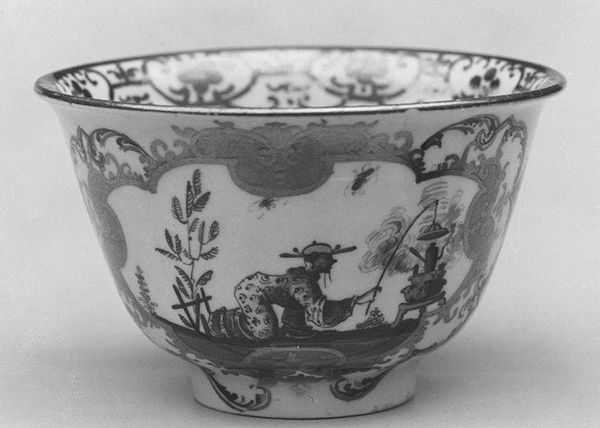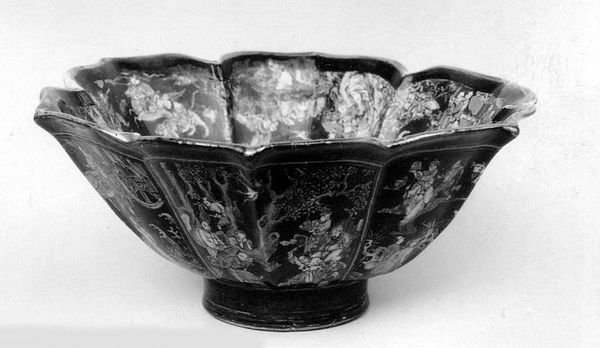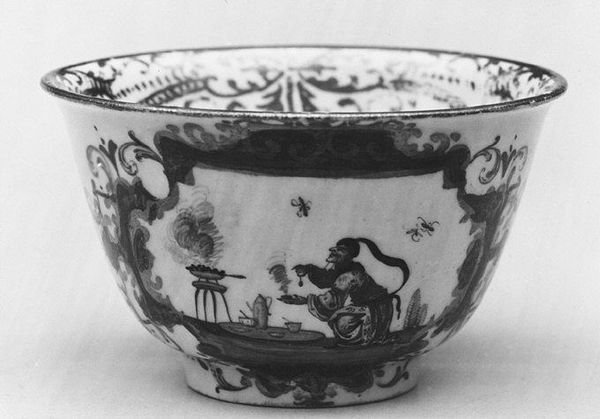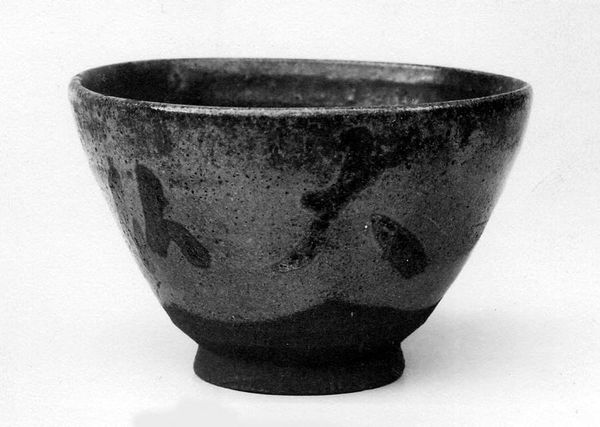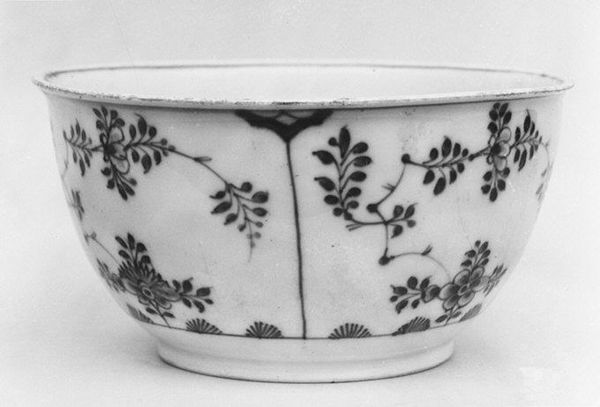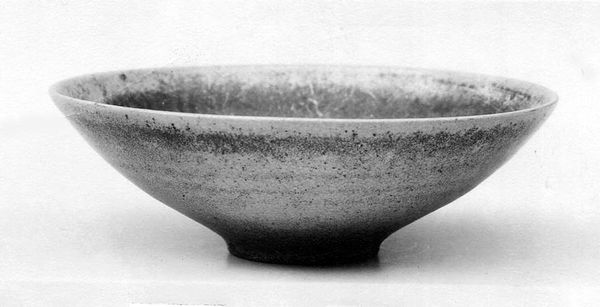
ceramic, earthenware
#
sculpture
#
asian-art
#
ceramic
#
earthenware
#
monochrome
#
monochrome
Dimensions: H. 3 1/8 in. (7.9 cm); Diam. 5 in. (12.7 cm)
Copyright: Public Domain
Curator: Here we have a teabowl crafted by Kenzan IV, sometime between 1830 and 1850. It’s currently held at the Metropolitan Museum of Art. It is rendered in earthenware, monochrome ceramic, and what strikes me is its understated elegance. Editor: My initial impression is its quiet, almost mournful tone. The monochrome palette really sets a scene for introspection, doesn’t it? But there’s a certain boldness to the brushstrokes that disrupts complete solemnity. Curator: Absolutely, and I think that tension speaks to the enduring significance of the teabowl in East Asian culture—as a symbol of communion and introspection. We see floral motifs here, and those choices reflect a profound reverence for the natural world, with a clear link to artistic lineages that informed Kenzan’s imagery. The imagery connects it to previous works made by Kenzan, with similar painting. Editor: It makes you wonder about the ritual of tea itself during this period and Kenzan’s socio-political context. Was it a quiet act of resistance or contemplation in response to some political climate? What does it mean to use such carefully cultivated images of the natural world in this highly stylized form, at this place and moment in history? Curator: Those are intriguing questions that the bowl seems to hold close within it. And it raises even deeper thoughts about artistic and creative labor. Thinking about Kenzan’s process, I imagine the meditative repetition inherent in forming the clay, mixing the glazes, and meticulously applying those fluid brushstrokes. The act of creation becomes a dance of discipline and creative spirit. Editor: Yes, and let’s remember the long lineage of potters and craftspeople whose knowledge and skill made this teabowl possible. This wasn't created in isolation. Curator: Precisely! It's a tangible link across generations. A vessel holding not just tea but cultural memory. I keep considering what elements tie objects like this to human culture, its creation, and its enduring place in art and life. Editor: Right, how everyday objects quietly carry weight of culture and tradition. This bowl is so much more than just a functional item—it encapsulates a story, invites questions, and softly reflects our relationship to the past.
Comments
No comments
Be the first to comment and join the conversation on the ultimate creative platform.
